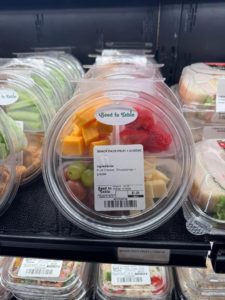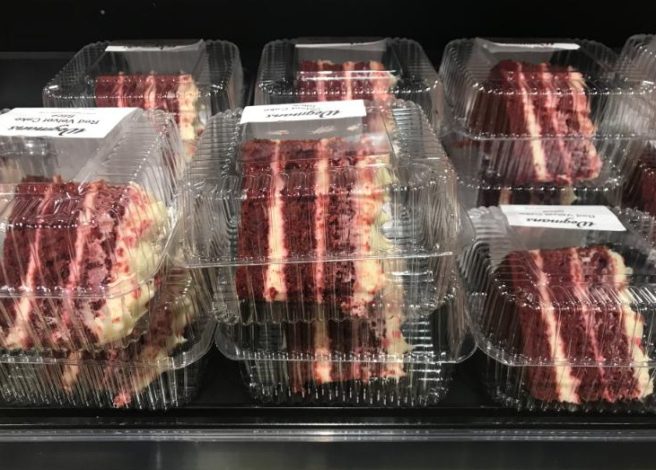Listen to the audio recording of this blog post or check out the featured Podcast about this topic.
At a Glance
- Shelf-life extension is a profit lever — even one extra day reduces waste, saves labor, and protects margins across your operation.
- Oxygen, temperature swings, and poor packaging are silent killers of freshness — and they quietly drive up costs you can’t afford to ignore.
- Smart operators shift their mindset — the question isn’t “How cheap is this container?” but “Will it protect product quality and cut waste?”
- Testing beats guessing — run real-world trials to measure shelf-life impact, then invest where it matters most.
Every day, millions of dollars vanish into dumpsters across the country in the food industry. This is not because of theft, accidents, or equipment failures but because of something far more insidious: the relentless march of time against perishable products. The solution? Strategic shelf-life extension.
The brutal math is simple. When fresh food loses even a single day of shelf life, the financial ripple effects extend far beyond the cost of the container holding it. Most food industry professionals still see packaging as just an expense. They overlook its true value: a wise investment in operational efficiency.
At Inline Plastics, we’ve made fresh food packaging for over 55 years. We have learned a thing or two about what influences shelf life, and today we will share those insights with you.
In this article, we’ll discuss what can reduce shelf life and show what real savings look like when food is kept in the right conditions.
The Real Enemy: Time and Oxygen
 You might think that what causes food degradation is “shelf-explanatory” (we like to have fun here). The real causes may actually surprise you. Fresh food has two primary adversaries working against its longevity: time and oxygen exposure. Oxygen in food packaging speeds up spoilage. It makes crisp lettuce wilt, fresh fruit go mushy, and (formerly) tasty meals become waste.
You might think that what causes food degradation is “shelf-explanatory” (we like to have fun here). The real causes may actually surprise you. Fresh food has two primary adversaries working against its longevity: time and oxygen exposure. Oxygen in food packaging speeds up spoilage. It makes crisp lettuce wilt, fresh fruit go mushy, and (formerly) tasty meals become waste.
Temperature fluctuations during transport and storage compound these challenges. When products move from processor to retailer or from prep kitchen to display case, keeping them in good condition is harder. This happens when packaging systems don’t provide the right barriers.
Several factors lead to this degradation process. These include how products are handled at first, storage methods, and environmental controls in the supply chain.
Beyond the Container: The Multiplier Effect
Here’s where conventional thinking about packaging costs goes wrong. Many procurement decisions only look at the per-unit price of containers. They treat them like napkins or twist ties — forgettable extras — rather than as vital components of the product itself.
But packaging isn’t just a vessel. It’s the first thing a customer sees. The thing that protects the food, preserves freshness, signals quality, and — if done right — makes the product more valuable. Ignoring that is like judging a concert by the ticket stub.
Consider the anatomy of a typical food operation’s expenses and what happens when shelf-life decreases:
- Food costs (the largest slice of the operational pie)
- Labor expenses (everything needed to prepare the food and package it)
- Utilities and overhead
- Transportation and logistics
- Various operational materials (typically smaller slices)
When shelf life decreases by even one day, the food cost slice of this pie grows dramatically, creating a cascading effect throughout the entire operation. You may be wondering what this cost looks like. Let’s get out our calculators and get ready to do our math.
The Mathematics of Waste
Let’s examine what happens when a food operation loses just one day of shelf life across its products. The numbers reveal a startling truth about the hidden costs of this seemingly small loss.
Take an operation producing 100,000 units annually with a food cost of $2.50 per unit. If operational factors result in just one day fewer of shelf life, leading to a 5% increase in waste, the additional food cost reaches $12,500 annually.
Let’s Not Forget About Labor
Add labor costs to the equation. When products spoil faster, retail staff spend more time rotating inventory, pulling expired items, and managing waste disposal. Even at modest hourly rates, these tasks can quietly rack up significant additional labor costs annually.
Processors aren’t immune to these impacts either. Spoilage earlier in the supply chain means more product returns, rejected shipments, or discounting to move aging inventory — all of which cut into margins. On top of that, processors absorb added labor costs for repackaging, disposal, and handling returns, not to mention the total loss of raw materials and finished goods.
When scaled to a regional food processor handling 100,000 units annually, losing just one day of shelf life can quietly drain tens of thousands of dollars in combined food and labor costs. Bump that to 500,000 units, and you’re staring down larger figures in preventable losses. At a million units? You’re not just trimming margins — you’re lighting money on fire.
The Investment Mindset Shift
 The most successful food industry professionals rethink traditional cost-benefit analysis. Instead of asking, “How much can we save on packaging?” they ask, “Will this packaging choice protect shelf life — or cost us more in waste and labor down the line?”
The most successful food industry professionals rethink traditional cost-benefit analysis. Instead of asking, “How much can we save on packaging?” they ask, “Will this packaging choice protect shelf life — or cost us more in waste and labor down the line?”
When packaging is selected based on price alone, it often sacrifices shelf life, leading to product loss, added labor, and operational inefficiencies. The real savings come from choosing solutions that preserve freshness longer, reduce spoilage, and minimize rework or waste handling — all of which drive true efficiency across the operation.
This shift in perspective reveals how closely shelf life is tied to operational success. When food operations invest in the right packaging, control their handling environment, and follow proper protocols, they extend shelf life — and in doing so, they reduce waste, lower labor costs, and protect revenue. That’s how small decisions move the needle from cost center to profit center.
The concept extends beyond immediate financial returns. Longer shelf life helps cut food waste, supporting sustainability goals and showing environmental responsibility. These values matter to today’s consumers.
The Calculation That Changes Everything
We hope you still have that calculator out. When looking at operational improvements, the key metric isn’t the cost of each part. It’s the total cost of ownership for the entire year. This calculation includes:
- All operational material costs
- Food waste reduction
- Labor efficiency gains
- Reduced disposal costs
- Enhanced customer satisfaction from fresher products
When done honestly, this analysis shows that improving operations can yield returns of ten times or more than the original investment.
Testing Your Way to Truth
The most reliable way to understand shelf-life impact is through direct testing and measurement. Many suppliers offer samples and trial periods, which allow food operations to compare options in real-world settings.
These tests should account for all variables: different product types, various storage conditions, transportation scenarios, and seasonal temperature variations. Only through comprehensive testing can operations determine the true impact of different operational approaches on shelf life.
The Competitive Advantage
Food operations that embrace the investment mindset gain multiple competitive advantages. They reduce waste, improve margins, and deliver consistently fresher products to customers. This mix creates a substantial difference in markets. Consumers want quality and freshness more than ever.
Perhaps most importantly, they build resilience against market pressures. When competitors struggle with waste management and thin margins, operations with optimized shelf-life processes maintain profitability and growth.
Beyond the Numbers: Building a Sustainable Future
 The food industry is changing its approach to environmental controls and handling practices. Instead of seeing them as costs, companies now view them as investments. This shift shows a deeper change in how the industry approaches sustainability and responsibility.
The food industry is changing its approach to environmental controls and handling practices. Instead of seeing them as costs, companies now view them as investments. This shift shows a deeper change in how the industry approaches sustainability and responsibility.
Each extra day of shelf life reduces food waste, lowers the environmental impact of disposal, and increases the value of agricultural resources. By focusing more on the industry’s environmental impact, this method leads to sustainable operations and gives Mother Nature a reason to smile.
Now That You’re Shelf-Aware…
Losing just one day of shelf life can be costly for food operations. The evidence is clear: it’s smarter to invest in improvements that keep products fresh. The question isn’t whether your operation can afford to invest in better processes — it’s whether you can afford not to.
The most successful food industry professionals have already made this calculation. They know that in business, time equals money. Each extra day of shelf life brings measurable gains that add up over time.
The choice is straightforward: continue treating operational improvements as commodity expenses or embrace them as the strategic investments they truly are. Mathematics strongly favors the latter approach. After all, you can’t argue with your calculator.
Ready to calculate the actual impact of shelf life on your operation? Consider conducting your own testing to determine how different packaging approaches affect your specific products and operating conditions.
Do you want to know more about packaging and operations? Visit our Learning Center today to explore a wide range of topics. If you are looking for support with your packaging solutions, talk to us!

